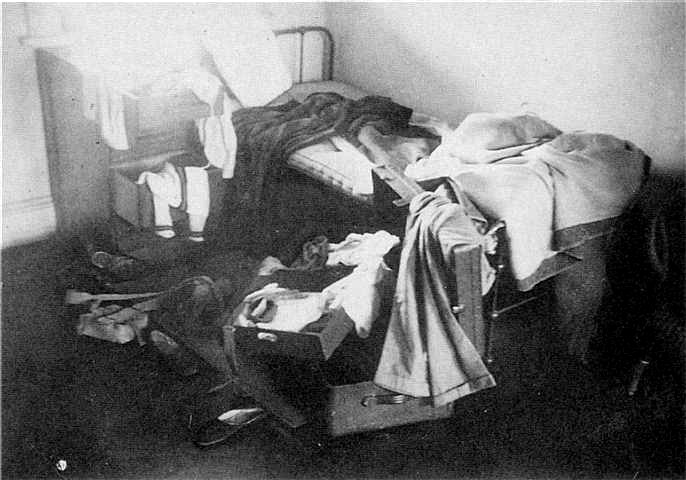Room Layout Standards



Room Layout
There was some method in the madness of the standard room layout: its functional use that all clothing and equipment was readily available, ready to wear and in a predictable place. But it went well beyond the functional, giving staff with a greater penchant for petty detail than breadth of thought the opportunity to impress themselves on the minds of the students.
The other side of the coin was the natural tendency for bachelor slovenliness in living areas, a topic well appreciated by parents with young and not so young sons. In setting a minimum standard for experienced evaders, it was difficult to define anything other than a maximum.
Photo: I.C. Teague
Cupboard layout
Strict guidelines applied to all disposition of clothing. Piles of small clothes were folded to fit the size of a page of unit standing orders.
Those able to work it could possess duplicated sets, those for show and those for use. A cadet's sole refuge lay in a locked metal cabin trunk which was not inspected, or a friendly car boot, but capacity and the requirement to have a minimum of items on display placed limits on its efficacy.
Photo: I.C. Teague
A Sunday Room
The luxury of Sundays without room inspections was variously celebrated, this example demonstrating the necessity for strict standards on other days.
Rooms also came to a similar condition when a cadet attracted the adverse attention of his fellows or seniors. A thorough 'binning' meant hours of work restoring the neatness, acting as either a salutary punishment or the satisfaction of a sadistic sense of humour.
A particularly subtle but cruel example in binning rooms involved not disarray but the exchange of items between cadets of different sizes without disturbing the layout, so that the results became felt over a period of time at the most awkward times of rapid dress changes.
Photo: I.C. Teague
Room Layout Standards


